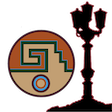Speaker
Description
A precise measurement of the polarizability of the charged pion provides an important experimental test of our understanding of low-energy QCD. The goal of the Charged Pion Polarizability (CPP) experiment in Hall D at JLab, currently underway, is to make a precision measurement of this quantity through a high statistics study of the γγ → π+π− reaction near 2π threshold. The production of Bethe-Heitler electron and muon pairs present significant backgrounds, which demand high discrimination between e/π and μ/π to select a clean pion-pair signal. Two independent AI/ML projects were developed to classify μ/π and e/π respectively: a tensorflow-lite model (training in python, inference in C++) for μ/π, and the TMVA package from ROOT for e/π. A new detector, consisting of iron absorbers interspersed with multi-wire proportional chambers, was constructed to enhance the discrimination between muons and pions. Both models were deployed in real time data monitoring to verify good experimental conditions.
| Experiment context, if any | Charged Pion Polarizability Experiment (JLAB E12-13-008), The GlueX Collaboration |
|---|
